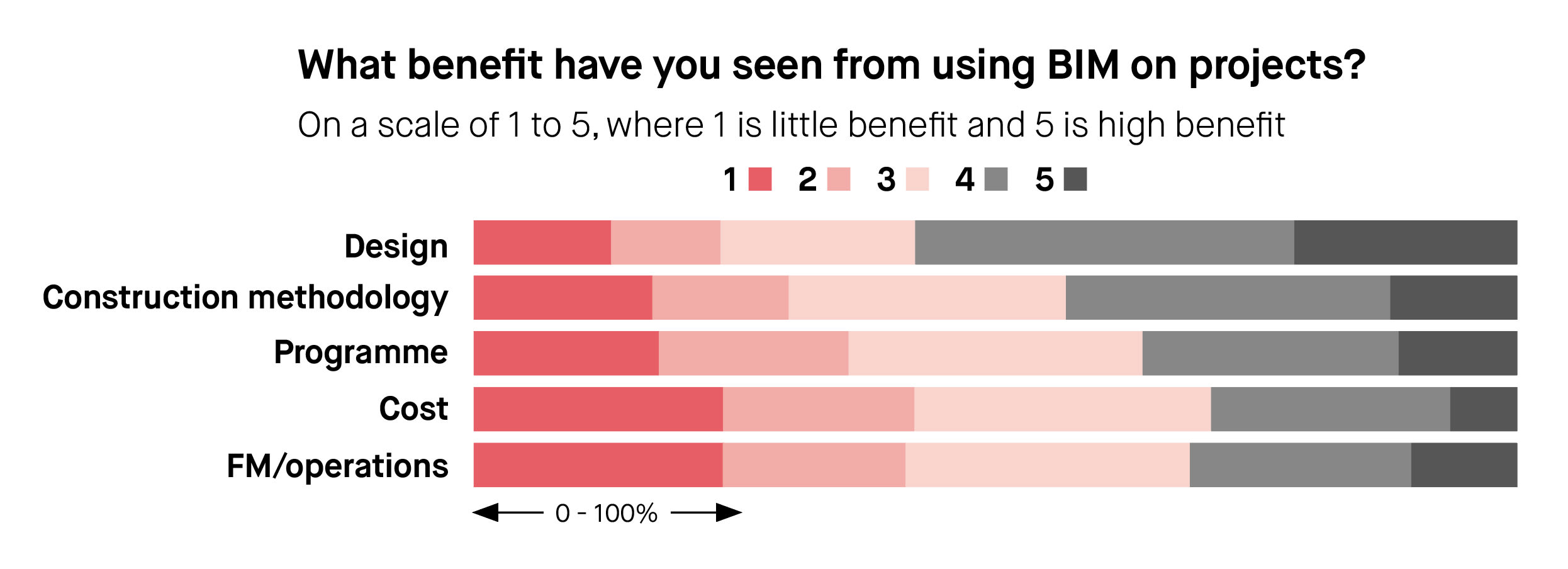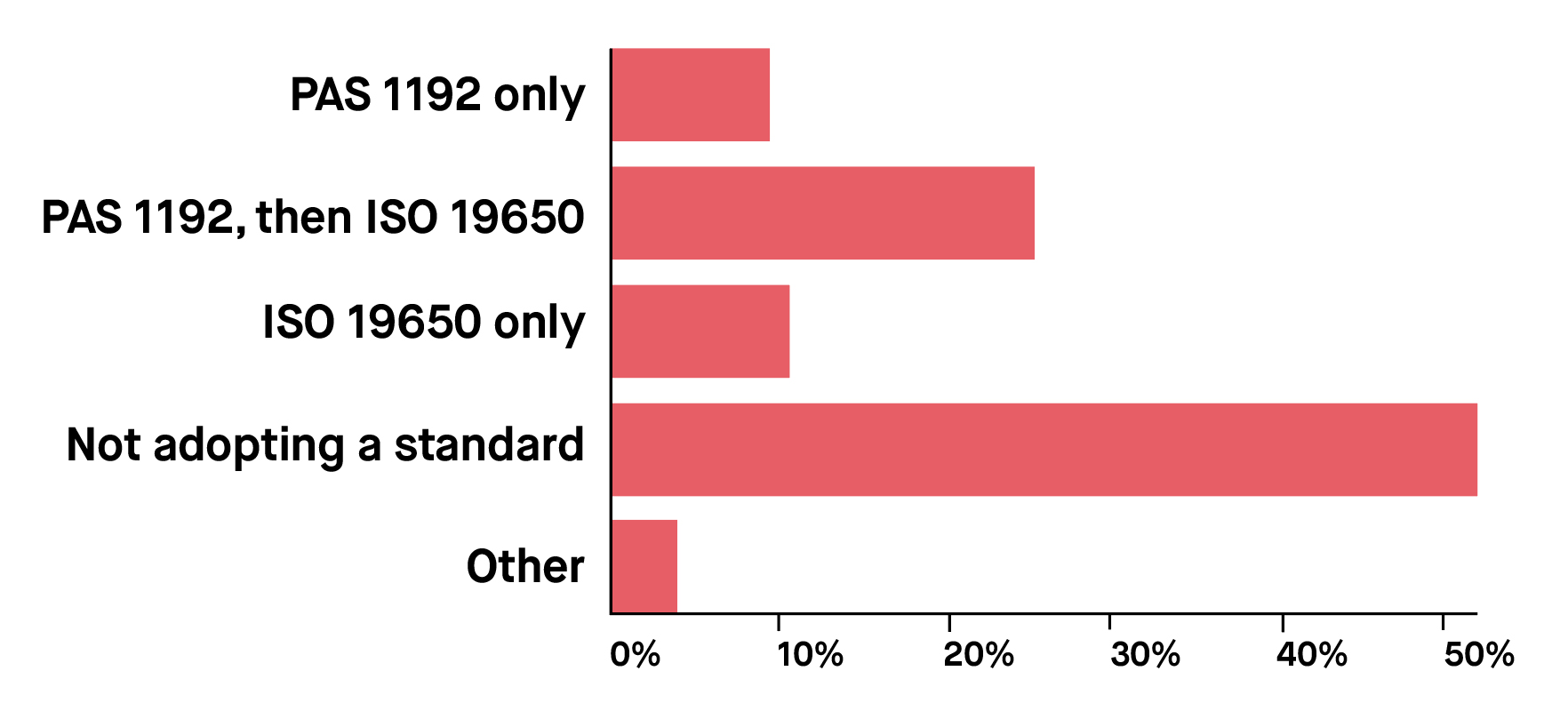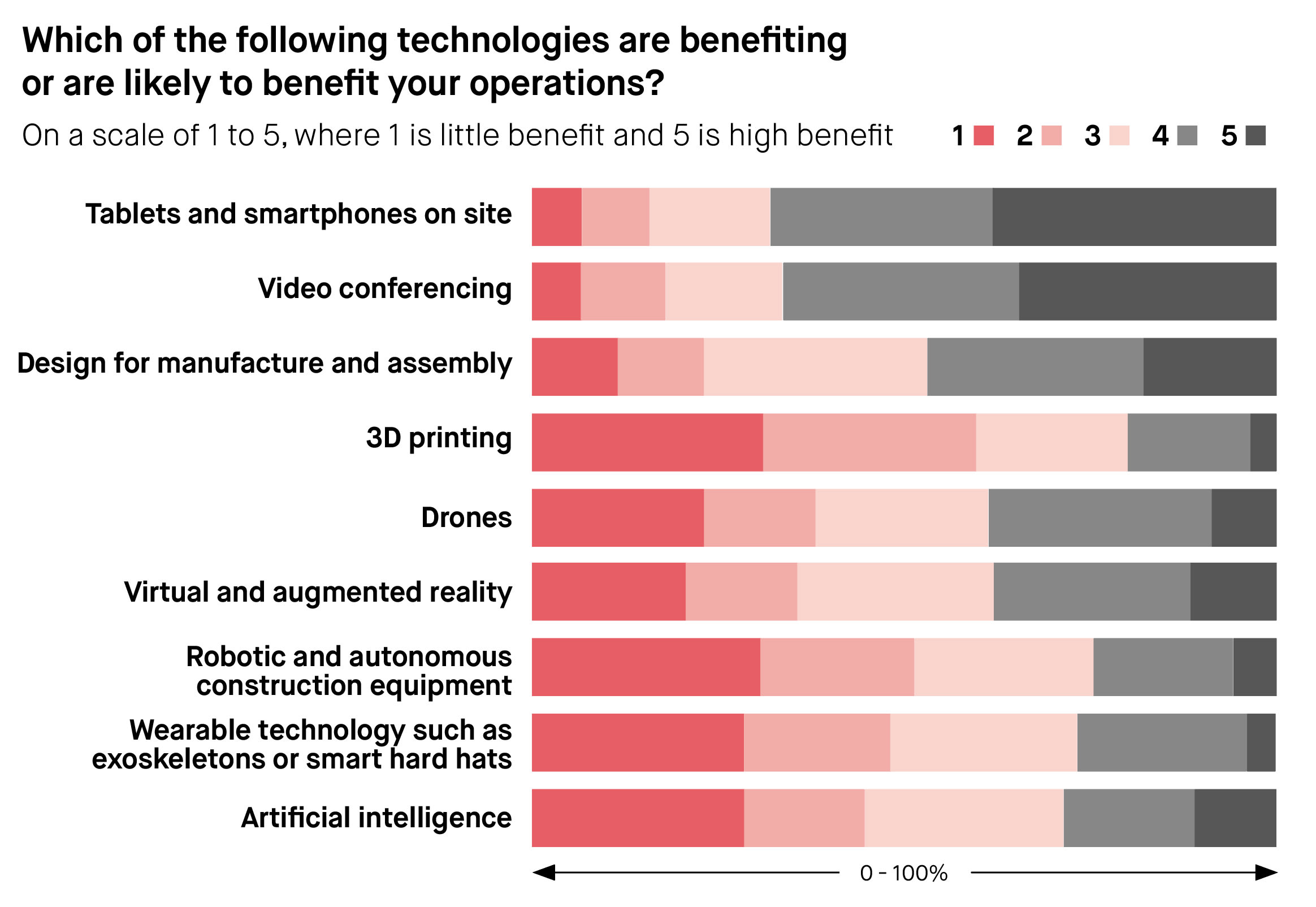BIM use is not meeting government targets and many barriers to digital adoption in construction remain, our extensive industry survey finds. Denise Chevin reports.
The fifth annual Construction Manager BIM survey, in conjunction with BIM+, shows a mixed picture of a sector still not wholly at ease with digital technology. The adoption of BIM shows little sign of accelerating, but the use of technologies that enable remote working, such as VR, teleconferencing and drones, is on the rise.
In this year’s survey of almost 300 construction professionals, over half of respondents say they hardly ever make use of BIM on their projects, with the results highlighting a lack of digital skills holding uptake back. One in five, however, are using it regularly. And there is a strong indication that the impact of coronavirus and working patterns would drive uptake going forward, though this would mean finding more money for investment – currently another key barrier.
Digital technologies have not been embraced at pace across the sector according to 45% of respondents, with only 3% saying construction is ‘going digital’ rapidly (scoring five on a scale of 1-5). Nearly four in 10 estimate the pace of digital uptake as moderate, scoring it 3.

Architects have been the most enthusiastic in finding BIM beneficial: nearly 60% say they have found it very helpful/helpful on projects in which they were involved with the design.
Across the sector, BIM is acknowledged as moderately useful for construction methodology, programming and cost control. In the FM sector, which has historically been slower to adopt BIM than construction, as many as nearly one-third (31%) have found BIM to be useful or very useful on projects.
Supplying digital asset data at the completion of a project is commonly understood to be one of the main benefits of BIM but here again the trend follows findings in previous years: over half of respondents have not or have rarely been asked to supply digital asset data. Just over a quarter, however, have often or very often been asked to do so.
The main organisational barriers to BIM’s adoption, or further adoption, were identified as the lack of digital skills (64%); limited funds to invest in new technology (56%); uninterested clients (52%); not enough evidence of benefits (45%); the boardroom out of touch with technology (41%); and confusing messages from technology vendors (33%).

More than six in 10 respondents (62%) said organisations would invest more in BIM and digital technology if there was more evidence of benefits – showing why there is an urgent need to develop new evaluation tools. This point was made elsewhere recently in a report commissioned from Northumbria University by the Centre for Digital Built Britain (CDBB) in partnership with the UK BIM Alliance, which highlighted a lack of effective tools for assessing BIM maturity, or for evaluating its benefits.
Factors that survey respondents say would add impetus to BIM/digital-isation were: strict enforcement of BIM requirements on public tenders (52%); the Hackitt reforms mandating handover of digital asset information – the so-called golden thread (32%); and the effect of coronavirus on working patterns (30%).
With those points in mind, the role of BIM in government reforms following the Hackitt Review could prove very influential. However, a document released in April costing changes alongside the government’s plans to respond to Hackitt seemed to suggest that BIM requirements had been downgraded for new, refurbished and existing buildings.
Changing standards
Results show slow uptake of ISO 19650.
Perhaps surprisingly, just over half of respondents have not adopted a BIM standard, with the rest of the respondents on board with one.
That aside, the results show there has been a transition from the British PAS 1192 suite to the international ISO 19650 suite, which was introduced last year: fewer than 10% of the respondents say they are still using PAS 1192; 26% have transitioned from the old to the new; and 11% say they are using ISO 19650.
The results mirror research carried out recently by John Ford, technical development lead for Galliford Try, and set out in BIM+ in late April this year.

Ford found that only “a tiny fraction of our projects are truly following the process defined in the PAS/ISO under whichever framework banner you want to use”.
Despite the government mandate of four years ago that by 2020 all centrally funded projects adhere to the information management processes defined in a UK-centric, whole-life approach to built assets in PAS 1192-2/3, and reiterated in IS0 19650 – or BIM Level 2 – the full set of steps that must be taken to deliver building and client benefits is not happening.
Ford said: “We are certainly not at business as usual when it comes to delivering projects to the process… defined within the old PAS/BIM L2 framework and the new ISO 19650/UK BIM framework, because we still have a great majority of projects that don’t get clear employer information requirements (EIRs).
“Those that do obtain a clear EIR often don’t go on to use all the information provided to them as requested, especially the information requirements for FM purposes.”
Useful technologies
Tablets and smartphones seen as providing most value for operations on site.
Questioned about the most useful technologies they use, 68% of respondents named tablets and smartphones for their value in their operations. This 15% rise from the previous year’s survey demonstrates how mainstream such devices have become.
Closely following tablets and smartphone as the most useful technology was video conferencing, which was nominated by 66% of respondents – undoubtedly a reflection of the current circumstances.
Design for manufacture and assembly (DfMA), which last year’s survey showed to be on the rise, has made very little progress across the sector in the past 12 months. Just under half of respondents (47%) said the technology was being used on projects they were involved in, compared to the previous year’s figure of 46%.
Drone usage increased year on year, with over half of respondents (53%) reporting it as a moderate benefit on site. But just 9% said drones were providing really positive onsite value.
Indicating that virtual and augmented reality (VR and AR) has started to come of age, 38% said it is of high benefit in onsite applications.
Artificial intelligence is also making advances, with just under a third of respondents saying it is proving useful (18%) or very useful (11%), and 27% saying it’s being used to a moderate extent.

Respondents
The 291 professionals who responded to our survey conducted between the middle of April and early May were drawn from across the UK construction sector, as follows:
- 14% public sector client
- 11% private sector client
- 25% main contractor
- 14% project manager/QS
- 14% consulting engineer
- 10% architect
- 8% specialist contractor
- 3% housebuilder.
Organisations they work for ranged in size from fewer than 20 employees (27%) to over 1,000 employees (29%).
Comments
Comments are closed.













No surprises here, it would be very interesting to see trends from, say, last five years. To get a glimpse of what areas are in which part of the adoption curve.
where can the full report be downloaded—similar findings to the NBS report released recently—new technology as a new way of working needs to be embraced…a new survey post virus would be very interesting in terms of change of approach and attitude